

Agridisk
Egypt - Alexandria
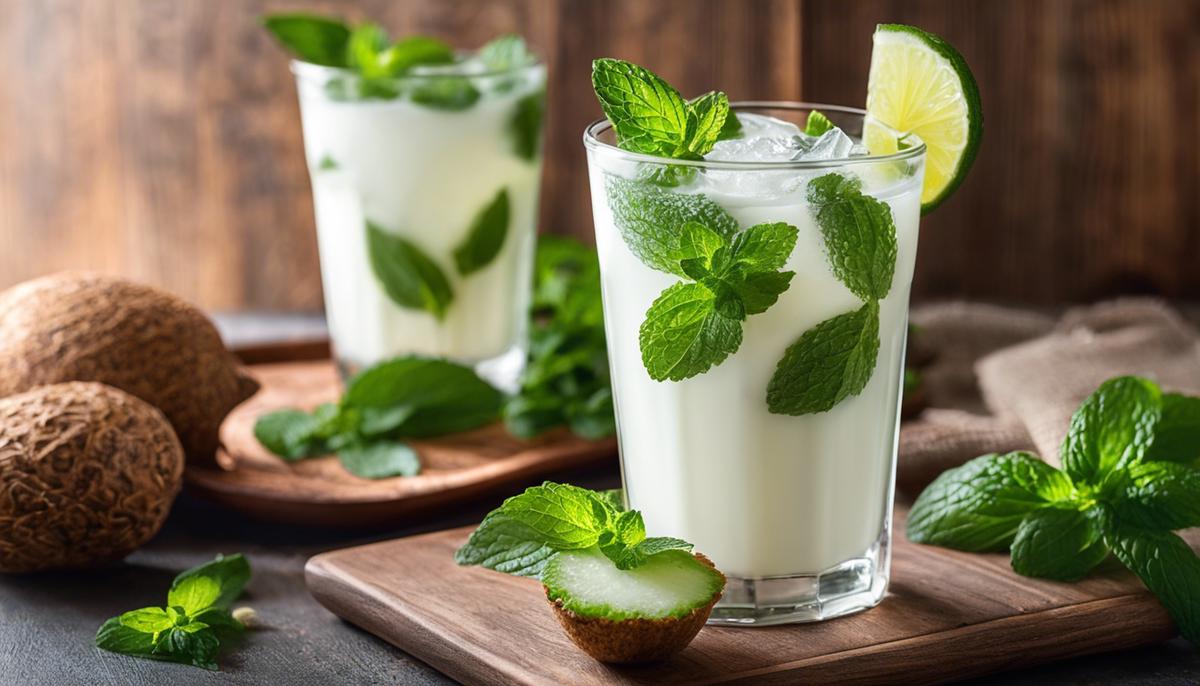
All about buttermilk how to make buttermilk benefits and disadvantages, and usage
Description: Buttermilk, an unfairly overlooked culinary staple, is much more than just a byproduct of butter-making. Possessing a unique tangy flavor, a rich nutritional profile, and a myriad of culinary potentials, it holds an indispensable place in kitchens around the globe. Our exploration will span from its creation process to its detailed health benefits, potential disadvantages and usage in world cuisine. Preparing your taste buds for a tart revelation, let’s dive deep into the intriguing world of buttermilk and discover its lesser-known facets. Prepare to embark on a delectable journey that traces back to the olden days of milkmaids and churns! Yes, you've guessed it. We’re all about exploring the delightful world of traditional buttermilk today! With a little daring, adventure, and most importantly, love for food – it’s indeed time we brought back the sheer deliciousness of homemade buttermilk right into our kitchens. What's all the fuss over buttermilk, you ask? Evidently, buttermilk has been the secret twist in many beloved recipes, emitting its tangy character and creamy thickness into pancakes, fried chicken, salad dressings and many other staple favorites. More than just a cooking ingredient, buttermilk has played a starring role in many culinary traditional dishes across cultures and cuisines. Whether it's an Indian 'Lassi' or an American 'Biscuit', buttermilk has rightfully earned its place in every foodie's heart. Now, let's dive into how traditional buttermilk is actually created. Historically, it was the liquid left behind after churning butter out of cultured cream. The slightly sour, creamy liquid was no byproduct, but a treasured ingredient in its own right. The great news is, this traditional process is absolutely achievable at home! Rather than watching your money pour down the drain on store-bought buttermilk, you too can unlock the culinary magic of homemade buttermilk, right here and now. The ingredients you'd need are as basic as can be - just some fresh milk and a touch of acidic ingredient like lemon juice or white vinegar. Begin with a cup of milk, and add in one tablespoon of the chosen acid. Stir briskly and then, simply let it sit. The acid will react with the milk, causing it to curdle and slightly thicken over the course of ten minutes or so. Voilà! You have just concocted your very own homemade buttermilk! On the road of epicurean exploration, creating traditional homemade buttermilk is a delightful experience for any gourmand. It’s a must-try not simply because it's fun, but also because nothing can replicate the taste of homemade. Remember, cooking isn't just about following recipes. It's about laughter, stories, and shared moments. It's about unlocking lost traditions and crafting our own. And most importantly, it's about connecting with the food we eat and the people we share it with. So the next time you find a recipe that calls for buttermilk, dare to substitute it with your homemade version. Because it doesn’t just add a tangy kick to your recipes; it adds a touch of hearty, homely love. Happy churning and happy cooking, fellow culinary adventurers! At first glance, one might regard buttermilk as just another dairy staple. However, upon digging a bit deeper, we uncover an absolute treasure trove of nutritional benefits backed by evidence. Buttermilk, being a byproduct of the process of making butter, is naturally steeped in probiotics, a variety of vitamins and minerals, and yes, a gastronomic delight in its own right! Probiotics, famously known as friendly bacteria, are essentially the superheroes of the digestive system. They work tirelessly to maintain a healthy gut, leading to more efficient digestion and absorption of nutrients. Buttermilk stands tall as a natural source of these probiotics. Regular consumption of buttermilk could mean bidding adieu to those unwelcome digestive upsets, boosting overall gut health and immunity. Buttermilk is no slouch when it comes to vitamins either. It is loaded with riboflavin or vitamin B2, a water-soluble vitamin vital in energy production, cellular function and growth, and metabolism of fats, drugs, and steroids. Riboflavin also holds a special place in the world of antioxidants, shielding our cells from harmful free radicals and reducing oxidative stress, thereby potentially helping to prevent heart disease and cancer. Additionally, buttermilk is a stellar source of minerals like calcium, potassium, and phosphorus, vital for maintaining bone health, regulating heart rhythm, and promoting cellular repair, respectively. Offer a toast to strong bones, a healthy heart, and well-maintained cells! As for those counting calories, rest easy. Though creamy and rich, buttermilk is surprisingly low in fat and calories, yet high in satiety - a delightful paradox for those wanting to keep their waistline in check. When compared with whole milk, buttermilk offers similar nutritional benefits but at a lower calorie count. It seems waist-friendly indulgence does indeed exist! Despite being a genius in the nutritional realm, buttermilk doesn't stop there - it goes beyond being a health elixir to being a culinary darling. Its unique tartness lends a depth to dishes, be it marinades or baked goods, that is hard to replicate, thus elevating their flavor profiles. To the uninitiated, buttermilk may seem like a humble, overlooked ingredient. But armed with the knowledge of its nutritional prowess, it's clear that it's time to rethink this underestimated star, empowering the culinary adventures and embracing the health benefits that homemade buttermilk has to offer. So, bring out the apron, set the ingredients, and get ready to embark on this fulfilling journey of making and relishing this powerhouse of nutrition, right in the comfort of your kitchen! Cheers to good health and happy cooking! Stepping into the world of food now turns a corner, exploring not just the scrumptious, tangy delight of homemade buttermilk, but diving into its impact on health. The truth is, like almost any ingredient in a food lover's pantry, moderation is key. While buttermilk is generally touted as a healthy choice, there is a caveat: too much of anything, even something as wholesome as buttermilk, may not be the best idea. For the uninitiated, buttermilk indeed packs a nutritional punch in every serving; but like any sampler platter at a new restaurant, it's important to know what’s inside before diving in. Buttermilk, for example, is traditionally low in fat yet high in protein. Protein, in all its glory, essentially serves as the building block of your bodily tissues. It's essential for recovery, strength, and an overall balanced diet. Add a dollop of buttermilk to pancake batter or use it as a marinade for meat, and you've got an easy, tasty way to up the protein content in a meal! That said, while it's high protein, it's also high in sodium. A couple of servings of buttermilk won't do any harm, but if indulged excessively, the high sodium content could potentially lead to high blood pressure or heart problems. Hence, individuals with hypertension or heart disease need to tread carefully. As with any food journey, there might be some hiccups along the way. Some people are lactose intolerant or have a dairy allergy, making buttermilk a no-go. Symptoms like bloating, diarrhea, and abdominal cramps after consuming buttermilk can be a sign. For these folks, there are non-dairy buttermilk alternatives available – coconut milk mixed with vinegar, anyone? Furthermore, buttermilk is also bundled with carbohydrates, albeit in a smaller proportion than its protein content. So, while it provides a slightly sweet, wonderfully tangy kick to dishes, it also adds to the carbohydrate count. This could be a potential area of concern for people with diabetes or individuals following a low-carb or ketogenic diet. Cooking and eating well is all about finding a balance. It's about savoring new flavors, experimenting with ingredients, and most importantly, enjoying the whole process. But yes, it also includes mindful intake, and acknowledging that every person's dietary needs and restrictions might be different. So, while buttermilk can be a delightful addition to your culinary repertoire, make sure to remember: delight in moderation! Enjoy the recipes, fluff up those pancakes, and indulge in cooking, experimenting, and sharing – with a watchful eye on health and well-being! Remember, the magic lies in balance. Buttermilk, as we’ve discussed, isn’t just a cultural footprint or a health drink. Trust every food expert to declare it a magical ingredient that has the power to uplift any given dish’s taste, texture, and tenderness. Its lightly sour, tangy flavor adds an enigmatic character that’s hard to resist. So, it is about time buttermilk ditched its behind-the-scenes role and get ready for some culinary limelight. Magic Works on Baking: Envision its role in baking, where it has masterfully assisted cooks in kneading out the lushest bread loaves, muffins, pancakes, or waffles. Why this adulation for it in baking, you ask? Acidity, the characteristic element in buttermilk, reacts vibrantly with baking soda or baking powder. This concoction is a scientist's "acid-base reaction," heaven for a food lover, as it blooms into the fluffiest morsels we've ever seen or tasted. Tenderizing Powers: Meat enthusiasts are well versed with the tenderizing prowess of buttermilk. Marinating firm meats in buttermilk helps break down the complex protein structure, thereby paving the way to the softest, juiciest bites of chicken or beef ever. Plus, this isn’t exclusive to meats. Even rough, sturdy vegetables like kale benefit, as a soak in buttermilk magically transforms them into velvety wonders, perfect for salads. Creamy concoctions: Dips and dressings find true friend in the creaminess of buttermilk, as its flavorful thick consistency makes quite a statement. Imagine the boring old ranch dressing or onion dip; adding buttermilk introduces a tangy, creamy note that makes it infinitely palatable. With such versatility, it's no wonder that buttermilk transcends the boundary of merely being an ingredient; it has quietly yet significantly maneuvred itself to be an essential in the culinary world. While reveling in the magic it brings, always be aware of its dietary implications. Food indeed connects cultures, traditions, people, and palates. But health remains paramount. Enjoy the journey of exploring various cuisines and traditions, but as you delight in the dance of flavors, temper it with the rhythm of well-being. And as you play around with buttermilk in your kitchen, humbly remember the joy and lessons it offers: simplicity in preparation, richness in nutrition, and above all, a world of magic in enhancing flavors. From the authentic process of making buttermilk at home to its distinguished place in the world of nutrition, buttermilk demonstrates remarkable versatility and potential. Undeniably, incorporating it into a balanced diet can contribute to overall wellness, despite a few considerations for certain individuals. In the culinary world, buttermilk has proven its worth as a secret ingredient enhancing the taste, texture, and appeal of various recipes. As we've learned, it is both beneficial and fascinating, so why not embrace this tart, creamy dairy product and explore its potentials in your kitchen?All about buttermilk how to make buttermilk benefits and disadvantages, and usage
The Buttermilk-Making Process
"A Culinary Journey: Dabbling in the Delights of Homemade Buttermilk"
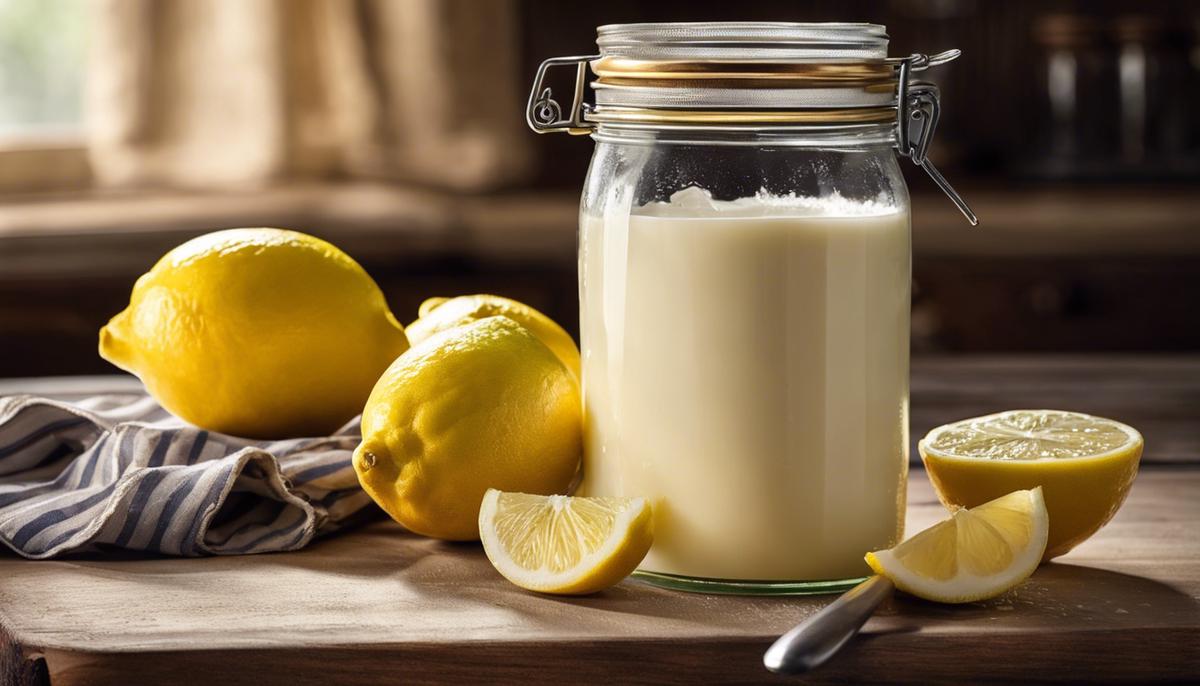
Buttermilk Nutrition and Health Benefits

Potential Drawbacks of Buttermilk
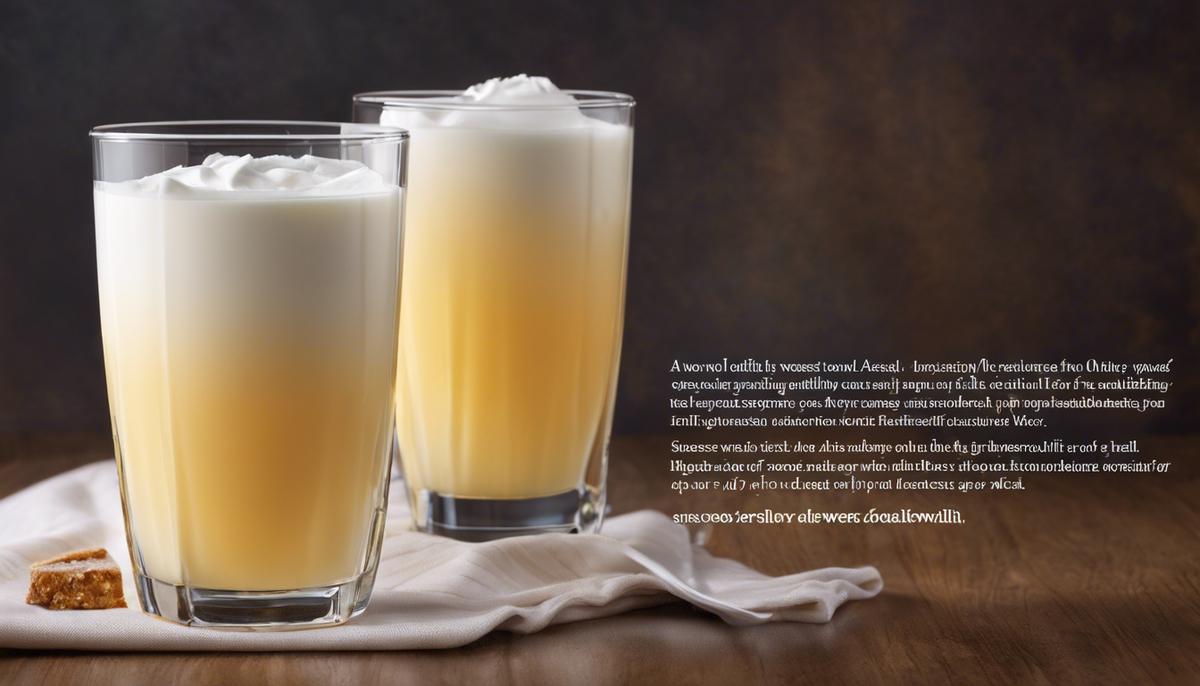
Culinary Applications of Buttermilk

All about how to make almond butter from almond milk
Almond butter, a beloved staple in pantries around the world, offers a delightful blend of nutrition and flavor. However, the journey from almond milk to almond butter is a road less traveled, yet brimming with culinary potential. This essay begins by diving into the realm of Almond Milk Concentration, a critical step where we transform the typically thin almond milk into a richer, more dense form. We'll explore the art of slow-heating and the science behind evaporating moisture, setting the stage for what promises to be more than just a how-to guide, but an exploration of ingenuity in the kitchen. As we progress, the focus will shift to Almond Pulp Preparation, unveiling techniques to glean the essential almond pulp, the canvas on which our almond butter masterpiece will be created. Journey with us as we unveil the intricate dance of filtration and dehydration, building toward the apex of our culinary adventure: Almond Butter Processing. Here, we'll learn to master the pulse of the food processor as we transmute our concentrated almond pulp into the rich, spreadable delight known as almond butter, perhaps even customizing our creation with oils and flavorings to suit our collective palates.
Imagine the creamy, dreamy delight of almond butter – that luscious spread that can elevate anything from a slice of toast to a sophisticated sauce. But what if, in a twist of culinary magic, we could create our own almond butter starting with something as delicate and fluid as almond milk? Well, prepare your taste buds for a journey of transformation, because that's exactly what we're about to dive into!
Concentrating almond milk into almond butter is, admittedly, not the most traditional method, but it's a worthwhile adventure for those who revel in pioneering new paths in the culinary landscape. Here's how you can turn liquid gold into a spreadable treasure:
And there you have it—a jar of homemade almond butter with a story as rich as its flavor. It's a labor of love and a testament to the joyous explorations possible within the realm of the gastronomically curious. Spread it, spoon it, or savor it straight from the jar, and don't forget to share this velvety indulgence with fellow flavor adventurers!
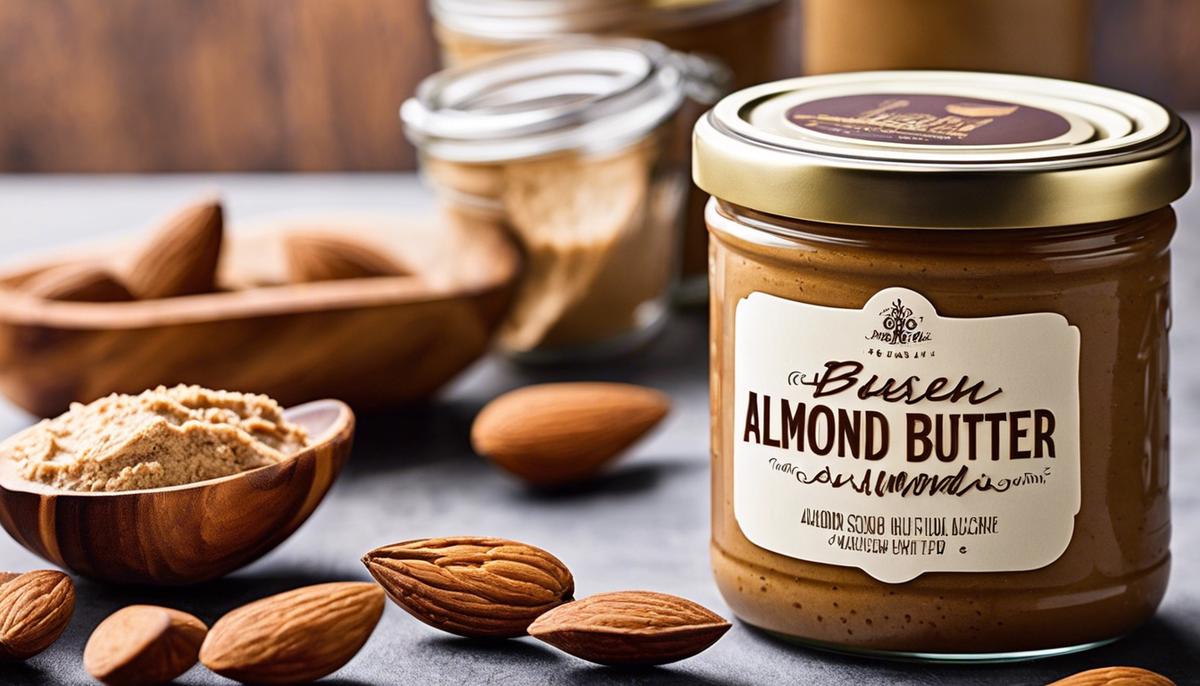
Once you've achieved the desired almond meal consistency from your lovingly reduced almond milk, it’s just a matter of pushing it a step further to realize your homemade almond butter dream. But let's backtrack a smidge; before the blending magic happens, there's the immensely satisfying phase of crafting that almond pulp—a vital stage for those yearning to master the art of almond milk utilization.
To conjure up pristine almond pulp, one must first dive into the process of straining. Ensuring that no delicious bit goes to waste, a fine-mesh sieve teamed up with a piece of cheesecloth or a nut milk bag is your golden ticket. Gently pour your thickened almond milk through the sieve, watching as the silky liquid separates from the grainy meal. It becomes a true test of patience—allow gravity to do its thing, encouraging the process along with the back of a spoon if needed, ensuring every precious drop of milk contributes to the final elixir.
The resulting pulp, a treasure trove of almond essence, is delightfully versatile. However, further refinement is necessary to prepare it properly. Spread the pulp on a baking sheet in a thin layer—no clumps allowed, as they could hinder even drying—and slide it into an oven set at a low, conservative temperature. This is where the alchemy happens, as the pulp gently dries, intensifying in flavor, becoming ever so slightly golden, and preparing itself to be transformed into the richest, creamiest butter when reunited with its liquid brethren.
Stirring occasionally, monitor the pulp until it reaches a dryness that whispers of readiness but still retains a modicum of its former moisture—you want it pliable, not brittle. The drying process is a true exercise in the art of balance, aiming for a texture that will blend smoothly without a hint of graininess.
After drying, let the pulp cool to room temperature; no one desires a heated frenzy when cold, calculated creaminess is the goal. The reintroduction of the almond pulp to the processor is the final act: here it meets any chosen flavor enhancers, coming together in culinary matrimony as the blades work their whirlwind magic until you're left with a butter that's indulgent, spreadable, and utterly moreish.
To all the culinary adventurers out there—dive into the world of homemade almond butter. It's a journey of textured transitions, of coaxing forth rich flavors from the unassuming almond, and an ultimate celebration of kitchen prowess. Give that almond pulp the love it deserves, and it'll reward you tenfold, turning the simplest of foods into a gourmet experience, and indeed, connecting us all through the love of good food shared.
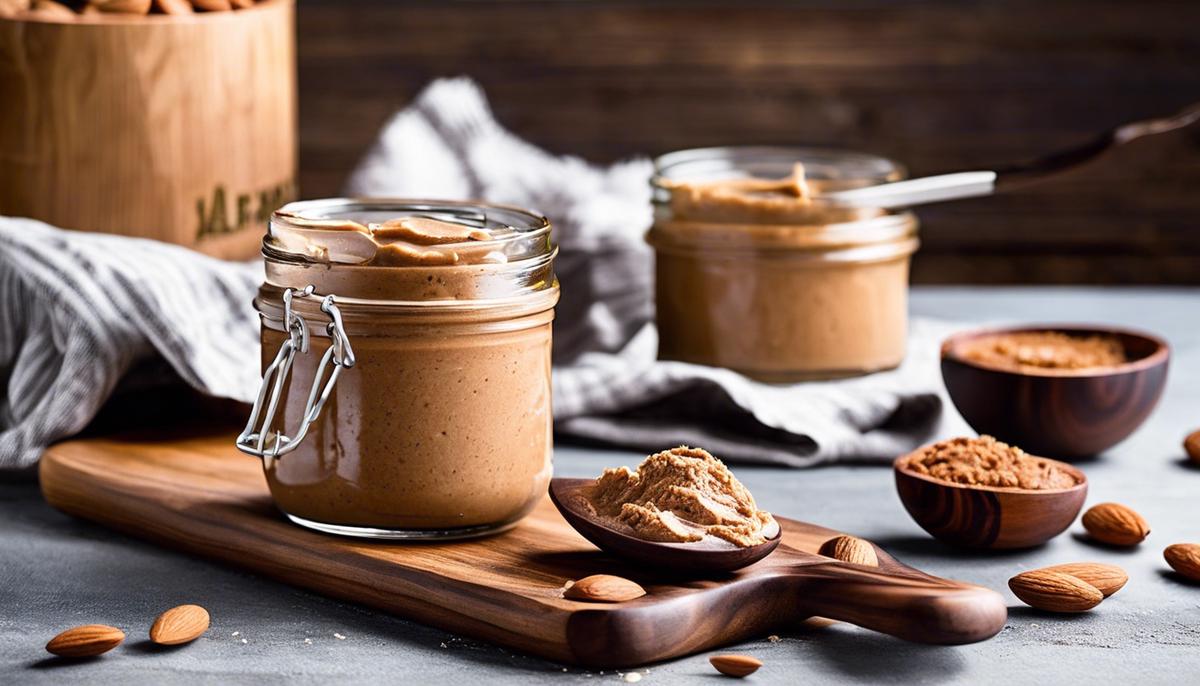
Moving beyond the introduction of turning almond milk into almond pulp and eventually almond butter, it's time to focus further down this culinary road. The journey from creamy milk to spreadable butter is an artisanal process but fear not, dear kitchen adventurers, for creating silky smooth almond butter is within reach!
So, the almond pulp is prepared, dry, and cool. What next? Achieving the perfect smoothness requires patience and a little know-how. Start by placing the almond pulp into the bowl of your mighty blender or food processor. This is where the magic happens.
Now, rev up the motor and begin the blending process. Initially, the ground almond pulp might seem uncooperative, looking rough and crumbly, but persistence pays off. The key here is to blend, blend, and blend, stopping occasionally to scrape down the sides of the bowl. This ensures an even consistency.
Gradually, the almonds will release their natural oils. This is crucial—it’s these oils that will transform the battered almond bits into a rich, spreadable delight. Depending on the power of your blender or processor, this stage could take anywhere from 5 to 15 minutes, maybe even longer for the textures worthy of a gourmet kitchen.
Witness the transformation from granular to glistening: the moments where texture evolves before your very eyes are nothing short of exhilarating. It's a dance of almonds and machinery, a display of persistence and transformation that would make any culinary enthusiast’s heart beat faster.
To those aficionados who relish a chunkier spread, halt the process earlier. But for those dreaming of almond butter that's as smooth as silk and runny as honey, there's no stopping until the almonds have fully surrendered their rich, oily essence.
For a final touch, a crystal of sea salt or a drop of high-quality oil can be introduced. A dash of olive or almond oil guarantees a luxurious finish that will make your almond butter velvety and even more irresistible.
And just like that, the journey from almond milk to almond butter is complete. One can now revel in the sheer joy of spreading homemade almond butter on toast, swirling it into a smoothie, or simply enjoying it by the spoonful. It's another reminder that in the kitchen, as in life, the simplest ingredients often yield the richest experiences.
Spread it, savor it, and above all, share it. For it's in these flavors and textures that bonds are built and moments are savored. Enjoy your homemade almond butter, the fruit of your labor, and a testament to the connecting power of food.
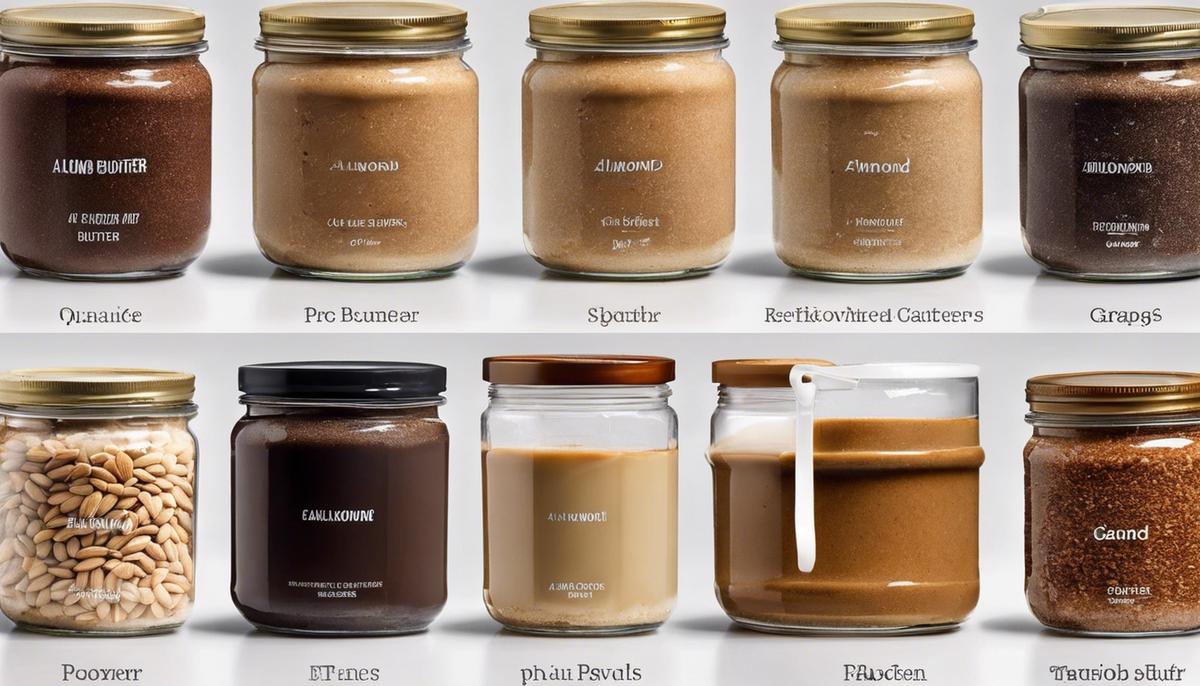
The creation of almond butter from almond milk stands as a testament to the transformative power of culinary creativity. Through applying the techniques of careful concentration, diligent separation, and precise pulverization, we have navigated the alchemy that turns a simple liquid into a sumptuous spread. Stepping beyond the conventional paths of store-bought varieties, our journey equips us with the knowledge to craft a homemade almond butter that is not only satisfying to the taste but also imbued with a personal touch of artistry. May the understanding gleaned from this narrative embolden you to embrace the process in your own kitchen, crafting spreads that celebrate the humble almond's full potential and the joy of do-it-yourself diligence.